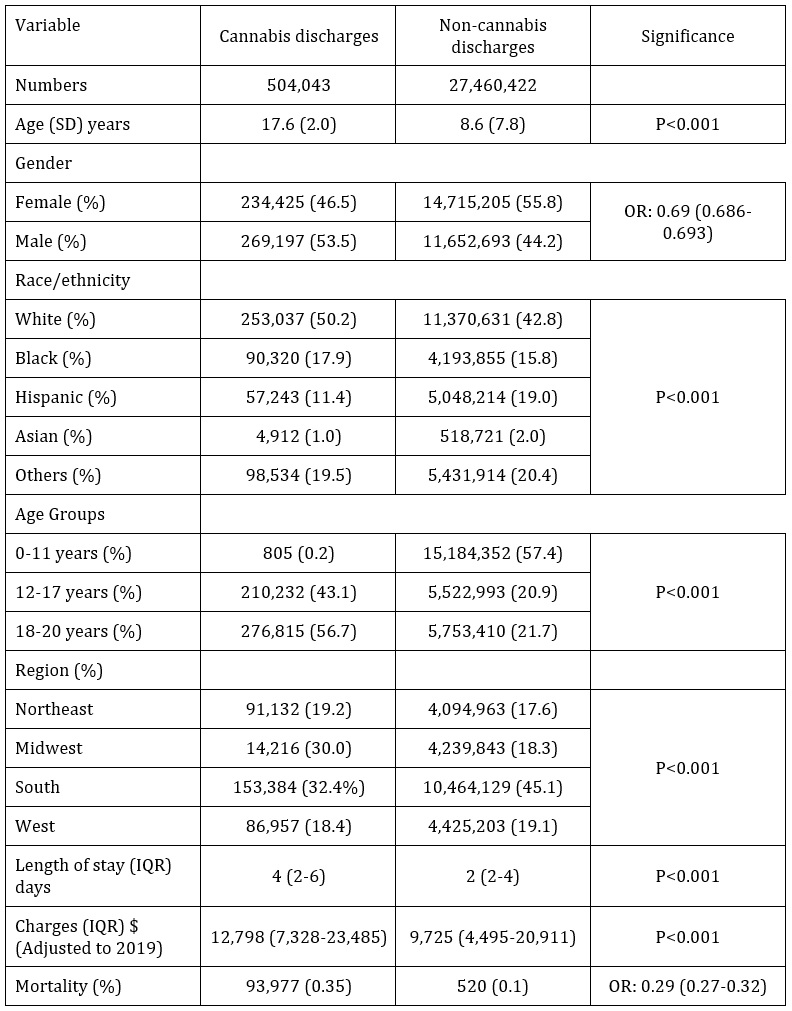Public Health & Prevention
Session: Public Health & Prevention 2
210 - An analysis of trends in hospitalizations of children related to cannabis use in the United States from 1997 to 2019
Saturday, May 4, 2024
3:30 PM - 6:00 PM ET
Poster Number: 210
Publication Number: 210.1404
Publication Number: 210.1404

Mithuna Totapally (she/her/hers)
Student
University of Cincinnati
New Albany, Ohio, United States
Presenting Author(s)
Background: Cannabis contains tetrahydrocannabinol which has proven to have harmful effects on health,
especially in children and adolescents. With easy availability and increased legalization,
cannabis use has increased in recent years. Some studies found that legalized cannabis use
positively correlates with youth hospitalizations.
Objective: The objective of this study was to determine the prevalence and trends of cannabis-related
hospitalizations in children from 1997 to 2019 in the U.S.
Design/Methods: We conducted a cross-sectional analysis using the Kid's Inpatient Database (KID) for the years
1997 to 2019 to determine the prevalence of cannabis-related hospitalization in children and
the trends in the prevalence. The Healthcare Cost and Utilization Project (HCUP) publishes KID
every 3 years. We have used 8 years of data available from HCUP for this study. Cannabis-
related disorders were identified using ICD-9 and ICD-10 diagnosis codes. Neonatal discharges
were excluded. The prevalence is presented per 1000 hospital discharges and 10,000 age-
specific mid-year US population. Age is grouped into 0-11, 12-17, and 18-20 years. The effect of
various demographic variables on the prevalence rates is analyzed using the Chi-square test.
The Chi-square for linear trend (Extended Mantel-Haenszel) test was used for trend analyses.
Hospital charges were inflation-adjusted for 2019. Continuous data are presented as median
and interquartile range and categorical data in frequencies with odds ratios and 95%
confidence intervals for binary analyses. IRB determined this as an exempt study.
Results: The prevalence of cannabis-related hospitalizations for the study duration was 18.4 per 1,000
discharges and 7.5 per 10,000 US population. The prevalence increased significantly from 1997
to 2019 (Tables 1 and 2). The prevalence of cannabis-related hospitalizations was more
frequent in males, in the 18–20-year age group, and in the South and Midwest and was less
frequent in Hispanics and Asians (Table 3). In children hospitalized for cannabis-related issues,
psychiatric diagnoses were recorded in 65% of cases, while vomiting was documented in 1%.
The length of stay, hospital charges, and mortality rate are presented in Table 3.
Conclusion(s): The prevalence of hospitalization of children with cannabis-related issues has increased linearly
from 1997 to 2019 in the United States. Psychiatric diagnoses are common in these children.
The findings of our study suggest that cannabis use in children is a growing public health issue
in the United States that needs to be addressed.
.jpg)
.jpg)

